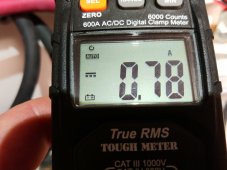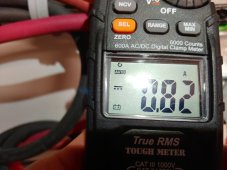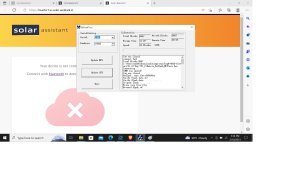I updated the firmware on both of my EG4-6500s without any problems at all using the new procedure and the Serial to USB adapter that I got from SS. Both the old and the new inverter now both show U1: 79.61 and U2: 61.10.
I am set up with 60A/120V AC Input to each inverter, and with EG4/USE battery types with comms cable from the 2P1 inverter to Battery 0000.
I've spent all day testing Settings 12 at 80% SOC and Setting 13 at 95% SOC, trying to come up with a setting that keeps a significant amount of battery in reserve for a scenario such as one where there is bad weather approaching that might cause utility power outages in my area (this happens several times per year).
The system does not work exactly the way I thought it did.
I found that with even the slightest PV input, the inverters hold the battery SOC at 79% and supplement the PV input as needed to run the loads while maintaining the battery. As long as there is any PV input, no matter how slight, SBU does not charge from 80% to 95%. This means that during the day, the solar will power the loads and charge the battery if adequate solar exists, but Utility will not charge the batteries above the SOC in setting 12.
However, if you turn off the PV input, the inverters do ramp up immediately at whatever Max Utility Charging Current that is set in Setting 11, and will ramp up to charge to the SOC in Setting 13. In my case, the inverters smoothly switched to charging from 80% to 95% SOC at 30A.
To test the system for switching from Utility back to Battery, I switched the PV back on and it showed 94W. The 2P1 inverter shut down showing an F80 code, while the 2P2 inverter continued to charge the battery but not power any loads.
I restarted the whole system from scratch and found the 2P2 inverter had changed back to SIG. I changed it back to 2P2 180 and restarted the whole system again.
Throughout testing, I did not see any flickering on my LED shop light, other than when the inverter switches from battery to grid mode. Even then, it was minor. The firmware update did seem to fix that.
There still seems to be a problem switching from Solar to Utility or from Utility to Solar when batteries are near full or when solar input is very low or intermittent and the inverters are trying to run at Max Utility Charging Current (early morning, late evening, heavy overcast, etc.).







